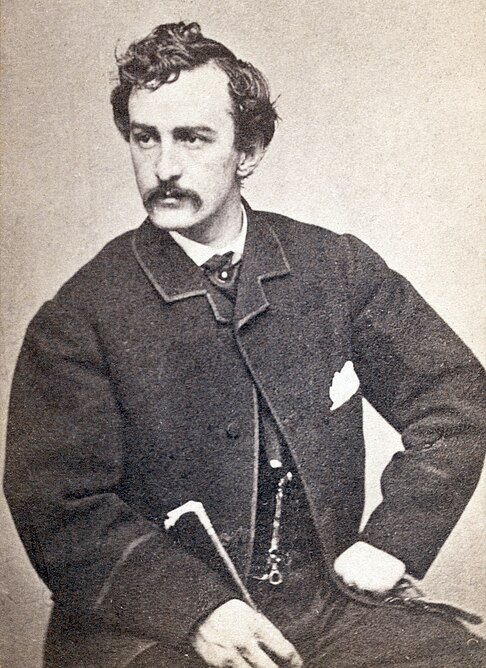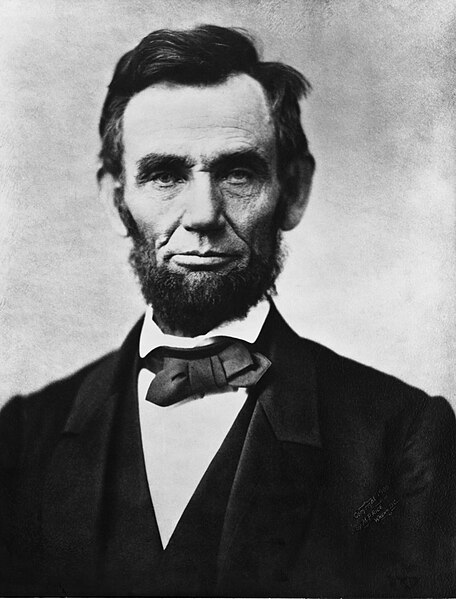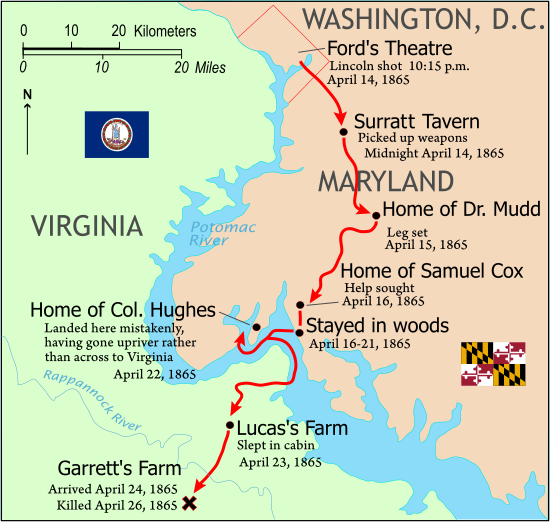Hello, Welcome to the American Dream Travel Co., we offer you a set of 5 destination packages to travel around the United States and explore America! You won't find a better deal package anywhere else! Safety, scenery, and valuable experiences are guranteed!
Package 1: The

Located northeast of downtown Minneapolis, Minnesota, was the only natural major waterfall on the Upper Mississippi River.
Hennepin named them the Chutes de Saint-Antoine or the
Following the establishment of Fort Snelling in 1820, the falls became an attraction for tourists, writers and artists who sought for inspiration, as Hennepin’s description of the fall was so majestic. Now is your chance to check out the beautiful Saint Anthony for yourself!
----------------------------------------------------------------------------------------
Transportation: A stagecoach will pick you up from the station closest to your house.
Lodging: You will stay at a quiet local inn for the night. At night you could observe the brilliant stars in the night sky, supper and breakfast are included.
Cost: The stagecoach costs $0.80 per person. Additional payment would be required depending on the total distance.
Lodging costs $5.80 per night.
Cost of meals may vary depend on the local restaurant of your choice.Time: Depends on where you live, the journey time may vary. If you live in the South or the West, it would take a couple days longer to reach our destination.
Clothing: Your everyday clothing would be fine. Please remember to bring a jacket, at night it gets cold!
Package 2: Flathead Indian Reservation - Montana

The Flathead Indian Reservation, located in western Montana on the Flathead River, is home to the Bitterroot Salish, Kootenai, and Pend d'Oreilles Tribes.
The Reservation was created through the 1855 Treaty of Hellgate. The Flathead Indian Reservation is an area of 1,938 square miles of forested mountains and valleys.
While visiting the fascinating Indian tribes, you can also enjoy the panorama of the beautiful Flathead River .
Flathead
Your chance of spotting an wildlife is high; you’re likely to see elk, bighorn sheep, and antelope at any time of the year, and it’s also an excellent location for bird watching! So what are you waiting for?
Transportation: a stagecoach would take you from Minnesota to Montana.
Lodging: You would stay at a small, cozy inn outside the reservation.
Cost: Inn cost $3.60 per night.
The stagecoach would cost $4.50.
Time: 6-12 days from Minnesota to Montana.
You would spend 2 days 1 night here; we want to make sure you're well rested before you head on to the next destination.
Food:
All meas are included.
Breakfast: chicken salid and mince pie
Lunch: Broiled fish with bouillon
Dinner: Stewed Rabbits and plum pudding.
Lodging: You would stay at a small, cozy inn outside the reservation.
Cost: Inn cost $3.60 per night.
The stagecoach would cost $4.50.
Time: 6-12 days from Minnesota to Montana.
You would spend 2 days 1 night here; we want to make sure you're well rested before you head on to the next destination.
Food:
All meas are included.
Breakfast: chicken salid and mince pie
Lunch: Broiled fish with bouillon
Dinner: Stewed Rabbits and plum pudding.
Package 3: Promontory

The Transcontinental Railroad has overcome hard rocks, bad winters, heat, lack of supplies and Indians, but it was eventually finished.
In 1869, the government finally decided where the Transcontinental Railroad should meet. And their final decision was Promontory Summit; and it was completed in May 10, 1869.
The golden spike was driven in the two railroad’s meeting place to commemorate the completion by the Central Pacific Railroad and the Union Pacific Railroad. Our nation is now joined with 3500 miles of railroad!
Therefore, our third destination is to take you to experience this remarkable accomplishment of our country. With the completion of the railroad, we could now travel from place to place such a speed you wouldn’t believe. Hop on the train, and let’s witness the miracle together!
--------------------------------------------------------------------------
Transportation: The stagecoach will pick you up fromMontana to Utah
Transportation: The stagecoach will pick you up from
Lodging: When you arrived in Utah
Cost: $110 for first class. $80 for second class (lesser amenities). $40 for raw immigrant class ( no amenities)
Time: It would take you 6-12 days from Montana to Utah.
Food: Food would be served on the train, food may vary for different classes.
Package 4: Sacramento, California

I’m sure you know about the California Gold Rush from 1848-1855. At that time, approximately 300,000 people went aboard in the dreams of getting rich. The gold rush led to great wealth for a few. However, but many returned home with little more than they had started with.
Sacramento is now a commercial and agricultural center, and a station for wagon trains, stagecoaches, riverboats, the telegraph, and the first transcontinental railroad.
Since you’re here, why not experience being a “forty-niner”, and try your luck?
You could also visit the Sacramento Cemetery. Established in 1849, the City Cemetery has become the resting place of many remarkable Californians. It is the resting place of many Civil War Veterans, volunteer fireman, and the victims of the 1850 cholera epidemic.
You could also visit the Sacramento Cemetery. Established in 1849, the City Cemetery has become the resting place of many remarkable Californians. It is the resting place of many Civil War Veterans, volunteer fireman, and the victims of the 1850 cholera epidemic.
-------------------------------------------------------------------------------------
Transportation: You would arrive from Utah to California
Lodging: You would stay at a small hotel in
Cost: $5.5 at the hotel per night.
Cost of food may vary depending on your choice.
Time: It takes 4 days from Utah to arrive in California.
Time: It takes 4 days from Utah to arrive in California.
Food: You will enjoy your meals at restaurants of your choice.
Package 5: The Beauty of San Francisco

Our last stop of this tour is San Francisco San Francisco
Many developments were made; In 1852, Domingo Ghirardelli established the famous Ghirardelli Chocolate Company. According to the SF Chronicle, he is considered San Francisco
In 1853, Levi Strauss came to San Francisco to open a west coast branch of his brother’s New York
Chinatown was created around 1848, it served as an entrance for immigrants who arrived during the gold rush or to help construct the railroad. Chinatown !
Have a taste of China
----------------------------------------------------------------------------
Transportation: Less than 100 miles from Sacramento , you arrive in San Francisco
Lodging: Be prepared! You would stay at luxurious Palace Hotel for the remaining nights! Palace Hotel is the largest hotel in the
Cost: $80 per night (made up)
Cost of food may vary depend on the restaurant of your choice.
Food: There are various restaurants inSan Francisco
Food: There are various restaurants in
Reflection
1. a) Which main topic does the artifact relate to? In what ways?
It relates to Urbanization: Construction of the Modern City; as you can see, the California Gold Rush attracted thousands of gold seekers, which resulted in the rapid growth of California. New innovations, such as the cable car was developed. Chinatown also brought in a new, different culture into the United States.
b) Which other main topics does it also relate to?
It also relates to Building the Modern Economy.
2. Why did you choose this artifact, and how much time did you spend creating and/or processing it?
I chose these locations because i wanted the five locations to be possible, or realistic, instead of jumping from place to place. I know some of the things are made up because i couldnt find information about them, but i did the best at guessing. I spent more than 5 hour creating this artifact, a lot of technical problems occured.
3. What insights and understanding have you gained from the creation and/or processing of this artifact?
I learn about the huge difference in money when i used the inflation calculator. Also, i learned about flathead Indian Reservation, I didnt know about them before. Another thing i didnt know was how early Chinatown existed and why it existed.
4. Does this artifact reflect your best work and/or ideas? Why, or why not?
Yes, i feel like i tried the best i could and shows my understanding in the artifact. I really learned a lot and i think it's quite easy to understand for my audiences.
5. Rate this artifact on a scale of -5 to 5(0 is neutral) for the following 4 criterion:
a) Impact on the quality of your Portfolio
5
b) Impact on your level of happiness/enjoyment
5
c) Impact on your learning
5
d) Level of creativity and originality
4
6. Any additional comments.
Sources: http://www.montanavacations.com/montana-tribes/montana-native-american-cultural-tours-the-flathead-reservation.html
http://ezinearticles.com/?19th-Century-Food-And-Drink&id=793289
http://www.linecamp.com/museums/americanwest/western_clubs/transcontinental_railroad/transcontinental_railroad.html
http://history.howstuffworks.com/american-history/transcontinental-railroad.htm
http://www.destination360.com/north-america/us/california/san-francisco/history
and Wikipedia
Reflection
1. a) Which main topic does the artifact relate to? In what ways?
It relates to Communication and Transportation Revolution; the completion of the transcontinental railroad allows traveling from place to place in a much faster speed. Originally traveling to East to West took months, it was shortened to weeks.
b) Which other main topics does it also relate to?
It also relates to Human Movement and Migration.
2. Why did you choose this artifact, and how much time did you spend creating and/or processing it?
I chose this artifact because the transcontinental railroad is the most important railroad built in the 19th century. I tried to look for others, but they all looked spidery and has no name on it; i didnt want to draw something i dont know about. I spent about 15 minutes on this artifact.
3. What insights and understanding have you gained from the creation and/or processing of this artifact?
I learned that the railroad passed through Nebraska, Wyoming, Utah, Nevada, and California.
4. Does this artifact reflect your best work and/or ideas? Why, or why not?
No; since i drew the first transcontinental railroad, it's not a very complicated task.
5. Rate this artifact on a scale of -5 to 5(0 is neutral) for the following 4 criterion:
a) Impact on the quality of your Portfolio
3
b) Impact on your level of happiness/enjoyment
5
c) Impact on your learning
3
d) Level of creativity and originality
3
6. Any additional comments.
None

In the last sentence of this video, i meant North America. Sorry :o
Reflection
1. a) Which main topic does the artifact relate to? In what ways?
This artifact relates to The Notion of Frontier; When President Jefferson purchased the whole new territory from Napoleon in 1803, he sent Louis and Clark to explore the territory, in hopes of finding the Northwest Passage, also, to make accurate maps of the territory, and to learn about native cultures and new plants and animals.
b) Which other main topics does it also relate to?
This artifact also relates to Nationalism and Liberalism; Creation of the Nation-State.
2. Why did you choose this artifact, and how much time did you spend creating and/or processing it?
I chose to show the audience the path that the took; the rivers they flowed through, and their forts, because i happened to find the an already existing file of the path, so i researched the name of the places they went and pinned down the main locations. I spent about 3 hours, because i did a little research, and i have to record it over and over again because i was continuously interrupted and i kept saying the wrong thing.
3. What insights and understanding have you gained from the creation and/or processing of this artifact?
I learned about what the path looked like, how long it took, and some of the things they encountered. They learn native americans, plants, animals, and they tried to create accurate maps; i could see how difficult the journey must have been at that time period.
4. Does this artifact reflect your best work and/or ideas? Why, or why not?
I think i did a fine job, but not a wonderful job; there were some awkward silences in between.
5. Rate this artifact on a scale of -5 to 5(0 is neutral) for the following 4 criterion:
a) Impact on the quality of your Portfolio
3
b) Impact on your level of happiness/enjoyment
4
c) Impact on your learning
4
d) Level of creativity and originality
3
6. Any additional comments.
Google Earth Path: http://bbs.keyhole.com/ubb/ubbthreads.php?ubb=showthreaded&Number=29917&site_id=1#import
other sources that i used:
Artifact 4: Gapminder Analysisother sources that i used:
and wikipedia
Graph 1: Life Expectancy VS. Income Per Person
As you can see from the graph, life expectancy in the United States stayed the same for a very long time. From 1800 to 1880 the average years people lived was 40 years. It wans't until 1880 that the number finally began to rise. At the end of the century it reached 49. On the other hand, the economy moves slowly and steadily. Even though the economy moved back and forth a few times, there were no severe drop backs of it and the economy moved pretty steadily after 1890.
Beginning in the 1880s, vaccines for cholera, anthrax, rabies, typhoid fever, and plague were successfully made. Cholera was one of the many contagious disease that killed a lot of people in the 19th century. Therefore, as more discoveries were achieved in the medical industry, people's lifespan also lengthened.
Economy After Civil War
After the Civil War (1861-1865) the world price of cotton went down, therefore the southern cotton industry became less profitable. Northern industry, which had expanded rapidly before and during the war, surged ahead. The economy of the South became devastated; incomes of whites dropped, but income of the former slaves rose.
As you can see from the graph, the economy moved at a faster pace after 1890. According to Wikipedia, by 1890, the USA leaped ahead of Britain for first place in manufacturing output.
Graph 2: CO2 Emission VS. Income Per Person
The graph starts in 1820, which indicates that before 1820 the amount of CO2 emission is not recorded. Income per person makes progress at the same time the amount of CO2 emission did. In the 19th century, America also progressed in industrialization.
Industrialization in America involved three important developments. The building of railroads; improvements made to industrial processes such as improving the refining process and accelerating production. The air began to be polluted.
As i have mentioned above, the economy moved slowly and steadily. In 1820, the income per person was 2011 dollars. In 1900, the amount was more than three times, it reached 6624.
In addition, in the 19th century many men went to California in search for gold. Some sell what they have for the money of transportation, but in the end, most people did not make tons of money from it.
Reflection
1. a) Which main topic does the artifact relate to? In what ways?
It relates to Building the Modern Economy; i chose to use "Income Per Person" twice because i think it best represents the idea of "big business." The completion of the transcontinental railroad made traveling from East to West easier. The economy in the South fell after the defeat in the Civil War. And also, i mentioned about people's dream of getting rich from the gold rush did not come true.
b) Which other main topics does it also relate to?
It also relates to Human Health and Invention, Ingenuity, and Entrepreneurs.
2. Why did you choose this artifact, and how much time did you spend creating and/or processing it?
I chose this artifact because i feel like these indicators best represent the idea of "big business."
It took me about one and a half to two hours since some research was required and there were a few technical problems.
3. What insights and understanding have you gained from the creation and/or processing of this artifact?
I learned that the CO2 emission first began to rise at the mid-19th century, and also how the United State's economy was stable at that time but moves back and forth from time to time.
4. Does this artifact reflect your best work and/or ideas? Why, or why not?
No. The graph was a little unclear to look at. I tried to use recording softwares but the result was worse.
5. Rate this artifact on a scale of -5 to 5(0 is neutral) for the following 4 criterion:
a) Impact on the quality of your Portfolio
3
b) Impact on your level of happiness/enjoyment
3
c) Impact on your learning
3
d) Level of creativity and originality
4
6. Any additional comments.
None

Buffalo Hunt, 1846
click here to see the primary source -----> http://www.eyewitnesstohistory.com/buffalo.htm
 Origin:
Origin:This document was created by Francis Parkman, an American Historian best known for his work of The
The
Purpose:
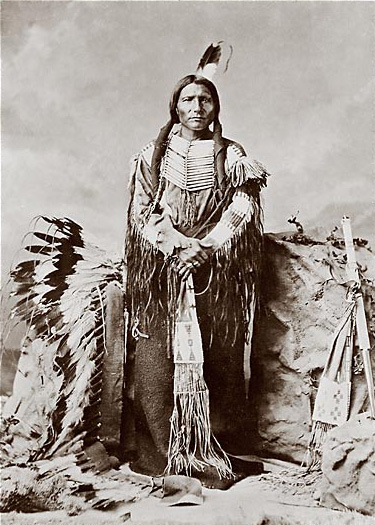 |
| a man from Oglala Sioux Tribe |
The author created the work in the first person point of view because it was the easiest way for him. He spent 2 month in the summer to observe things around him, therefore it saves time if he just write down things that pops into his mind.
 He first published his work in a magazine, then a book, therefore the intended audience was the public. The document describes the two ways to hunt down a buffalo. One is “Running” the buffalo; the second one is “Approaching.” He explained that running a buffalo is more risky but more exciting, whereas approaching is not life threatening but the hunter has to be “cool, collective, and watchful.”Value:
He first published his work in a magazine, then a book, therefore the intended audience was the public. The document describes the two ways to hunt down a buffalo. One is “Running” the buffalo; the second one is “Approaching.” He explained that running a buffalo is more risky but more exciting, whereas approaching is not life threatening but the hunter has to be “cool, collective, and watchful.”Value:
 He first published his work in a magazine, then a book, therefore the intended audience was the public. The document describes the two ways to hunt down a buffalo. One is “Running” the buffalo; the second one is “Approaching.” He explained that running a buffalo is more risky but more exciting, whereas approaching is not life threatening but the hunter has to be “cool, collective, and watchful.”
He first published his work in a magazine, then a book, therefore the intended audience was the public. The document describes the two ways to hunt down a buffalo. One is “Running” the buffalo; the second one is “Approaching.” He explained that running a buffalo is more risky but more exciting, whereas approaching is not life threatening but the hunter has to be “cool, collective, and watchful.”Even though the author did not wrote anything about his personal experience of hunting a buffalo, the way he describe the activity suggested that he admires the hunters who are capable of doing these incredibly dangerous “sports”.
Near the end of the 19th century, there were fewer than 1,000 of buffaloes left in North America prior to the original amount which was millions. Therefore, we can tell that this piece is not created recently since buffalo hunting today is no longer a popular sport; today, we protect them instead of massacring them.
This piece is created with the author observe carefully and learning the two ways of hunting down a buffalo. It reflected on his work because, as you can see, the document has detailed descriptions on the process of “running” the buffalo and the high risks and injuries you acquire in such activity.
 |
| Kit Carson |
This document does not particularly have a “controversy”; therefore the author does not represent any particular side. If there must be two sides, in this case, it is the against or not against buffalo hunting. The author does not seem to oppose the “sport”. But rather, he shows admiration towards men with good hunting skills.
In the last sentence in the “Approaching” paragraph, he wrote:
“Kit Carson, I believe, stands pre-eminent in running buffalo; in approaching, no man living can bear away the palm from Henry Chatillon."’
Limitations:
In this document, he did not bring up much about the Indians and how the Indians thought about buffalos disappearing in such speed. In fact, there’s only one sentence in this section of document:
“The bows and arrows which the Indians use in running buffalo have many advantages over firearms, and even white men occasionally employ them.” 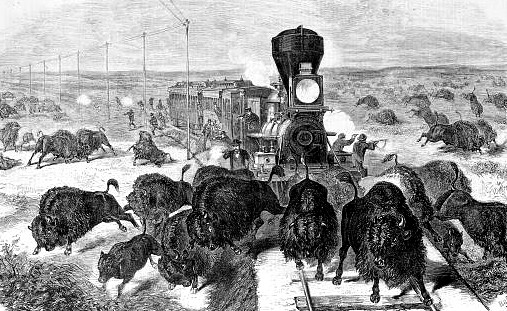 This piece accurately reflected the time period, and we can verify the content of this piece by checking with other historical documents relating to buffalo in the 19th century.
This piece accurately reflected the time period, and we can verify the content of this piece by checking with other historical documents relating to buffalo in the 19th century. I’m not certain about what the author purposely left out.
According to Wikipedia, the book was reviewed favorably by Herman Melville, although he complains that it demeaned American Indians and that its title was misleading (the book covers only the first third of the trail).
Reflection
1. a) Which main topic does the artifact relate to? In what ways?
It relates to Human Health. Buffalo hunting is quite a dangerous activity, and you can easily injure yourself or even get yourself killed. If you choose "Running", not only do you have to load the gun or pistol at full gallop, buffalos can be very aggresive; in addition, the ground might be full of burrows of the animals, if the horse thrusts its leg deep into one of the burrows; the bone snaps, the hunter is threw to the ground and probably killed.
b) Which other main topics does it also relate to?
It also relates to Communication and Transportation Revolution, since much of the buffalos were hunt down in the late 19th century because the people in the railroad industry did not want them to cause troubles.
2. Why did you choose this artifact, and how much time did you spend creating and/or processing it?
I chose this topic because i knew that a huge amount of buffalos were being hunt down at this time, and i would like to know what a person from that period thought about it. I spent about two to two and a half hours on this artifact.
3. What insights and understanding have you gained from the creation and/or processing of this artifact?
I learned about the two ways to hunt a buffalo: " approaching" and "running", and also that the Indian way of hunting a buffalo is sometimes more efficient than the white man's way.
4. Does this artifact reflect your best work and/or ideas? Why, or why not?
Yes. I spent a lot of time researching and i put a lot of effort into this. It is also quite interesintg to learn about so the process of creating was actually enjoyable.
5. Rate this artifact on a scale of -5 to 5(0 is neutral) for the following 4 criterion:
a) Impact on the quality of your Portfolio
5
b) Impact on your level of happiness/enjoyment
5
c) Impact on your learning
4
d) Level of creativity and originality
4
6. Any additional comments.
None
Artifact 6: Idea Page

This idea page is created based on the film Amistad.
 |
| I hope you guys can see it clearly |
 |
| I chopped it into two sections |
 |
| Bottom |
Reflection
1. a) Which main topic does the artifact relate to? In what ways?
This artifact relates to the topic Race Relations: Abolition, Segregation, and Anti-Semitism. This film is basically about the trials on whether the slaves should be freed or not.
As John Quincy Adams argued in the Supreme Court, if Cinqué were white and had rebelled against the British, the United States would have praised him as a hero. Therefore, it relates to race. Cinque is African, which was thought to be inferior to white man.
In they film, it also show abolitionists protesting and stating that the Africans are humans, not animals. This is also why President Van Buren decided to submit the case to the Supreme Court; his advisor warned him that if the Africans were freed, it would provoke the South and therefore might lead to civil war.
b) Which other main topics does it also relate to?
It also relates to Human Movement and Migration and Human Health.
2. Why did you choose this artifact, and how much time did you spend creating and/or processing it?
I chose to create this artifact because the film Amistad is based on a true story, therefore it not only provide a lot of true historical happenings but it is also very fascinating to watch.
3. What insights and understanding have you gained from the creation and/or processing of this artifact?
It is sad to learn about how cruelly the slaves were treated; they were often beaten, raped, and receive little food. When food supply is short, they simply throw slaves overboard.
I also learned that the Africans were freed because the United States laws on slave ownership does not apply on them; the Africans on Amistad were illegally kidnapped from their home, Africa. If they were born in United States the result might have been different.
4. Does this artifact reflect your best work and/or ideas? Why, or why not?
Yes; i wrote down things that i thought was important; after i watched the film i did some research to make sure i understand correctly.
5. Rate this artifact on a scale of -5 to 5(0 is neutral) for the following 4 criterion:
a) Impact on the quality of your Portfolio
4
b) Impact on your level of happiness/enjoyment
4
c) Impact on your learning
4
d) Level of creativity and originality
4
6. Any additional comments.
None
Artifact 7: Google Sketch-up Recreation of a Civil War Battleground
Reflection
1. a) Which main topic does the artifact relate to? In what ways?
It relates to The Universe Through a Microscope since i can zoom in and zoom out of the picture ( not after taking the photo).
b) Which other main topics does it also relate to?
It also relates to The Balance of Power: Empire Rise and Fall; since afterall it's a Civil War battlefield.
2. Why did you choose this artifact, and how much time did you spend creating and/or processing it?
I chose this artifact because i'm very unskilled and could not create anything more complicated. I'm not sure how long i spend on this artifact; i watch a few tutorials, and my computer kept lagging because of the amount of leaves i have. So basically i work on something else and then i return to this artifact, therefore i dont have the exact time.
3. What insights and understanding have you gained from the creation and/or processing of this artifact?
After viewing through the Civil War virtual battlefield tour, it seems like the majority of battles were fought in secluded area: surrounded by trees, nothing but grass, sometimes a few houses.
4. Does this artifact reflect your best work and/or ideas? Why, or why not?
No. I thought google sketchup was frustrating to use and i have no skill at all.
5. Rate this artifact on a scale of -5 to 5(0 is neutral) for the following 4 criterion:
a) Impact on the quality of your Portfolio
2
b) Impact on your level of happiness/enjoyment
1
c) Impact on your learning
2
d) Level of creativity and originality
3
6. Any additional comments.
My 3D is actually 2D.
Artifact 8: Student Free Choice
Save for later
Reflection
1. a) Which main topic does the artifact relate to? In what ways?
b) Which other main topics does it also relate to?
2. Why did you choose this artifact, and how much time did you spend creating and/or processing it?
4. Does this artifact reflect your best work and/or ideas? Why, or why not?
5. Rate this artifact on a scale of -5 to 5(0 is neutral) for the following 4 criterion:
a) Impact on the quality of your Portfolio
b) Impact on your level of happiness/enjoyment
c) Impact on your learning
d) Level of creativity and originality
6. Any additional comments.
Artifact 9: Student Free Choice
Westward Expansion: Poems
1.
2.
Reflection
1. a) Which main topic does the artifact relate to? In what ways?
It relates to Human Expression Through Art; These are the two poems i created, one is from an Indian point of view, the other from an white settler's. I believe it's easy enough to identify which is which.
b) Which other main topics does it also relate to?
It also relates to class conciousness and human movement and migration.
2. Why did you choose this artifact, and how much time did you spend creating and/or processing it?
I chose this artifact because i wanted to show the different point of view from both sides. I spent about half an hour creating it.
3. What insights and understanding have you gained from the creation and/or processing of this artifact?
I learned that when one side is telling their story, they always try to use words to fool the audience into thinking that they are the right side. When i read things from a white settler's point of view about the indians, that's exactly what happened.
4. Does this artifact reflect your best work and/or ideas? Why, or why not?
No; i enjoy writing these two poems but i won't call my work poetic.
5. Rate this artifact on a scale of -5 to 5(0 is neutral) for the following 4 criterion:
a) Impact on the quality of your Portfolio
5
b) Impact on your level of happiness/enjoyment
5
c) Impact on your learning
4
d) Level of creativity and originality
5
6. Any additional comments.
None
Artifact 10: Student Free Choice
1.
We did nothing,
To deserve this
White skinned devils,
The endless deceiving.
We’re not foolish, but stood no chance
Against the strange looking, yet deadly weapons
It pierced through our bodies,
An incurable wound.
You don’t own whatever land you land on.
Why are we the one being pushed off?
Hunger, cold, diseases
Who cares about us?
Helpless;
The trail of tears.
2.
New land; new opportunity
Transcontinental railroad;
What a wonderful innovation
Yet obstacles,
These children, who needed guidance
Worst, barbaric savages
Always gets in the way
Disgraceful clothing
Real eyesore.
Arson, murder, your silly bows and arrows
Enough is enough
Do you honestly think you could defeat us?
Keep dreaming,
I’m putting a stop to your little game right now.
1. a) Which main topic does the artifact relate to? In what ways?
It relates to Human Expression Through Art; These are the two poems i created, one is from an Indian point of view, the other from an white settler's. I believe it's easy enough to identify which is which.
b) Which other main topics does it also relate to?
It also relates to class conciousness and human movement and migration.
2. Why did you choose this artifact, and how much time did you spend creating and/or processing it?
I chose this artifact because i wanted to show the different point of view from both sides. I spent about half an hour creating it.
3. What insights and understanding have you gained from the creation and/or processing of this artifact?
I learned that when one side is telling their story, they always try to use words to fool the audience into thinking that they are the right side. When i read things from a white settler's point of view about the indians, that's exactly what happened.
4. Does this artifact reflect your best work and/or ideas? Why, or why not?
No; i enjoy writing these two poems but i won't call my work poetic.
5. Rate this artifact on a scale of -5 to 5(0 is neutral) for the following 4 criterion:
a) Impact on the quality of your Portfolio
5
b) Impact on your level of happiness/enjoyment
5
c) Impact on your learning
4
d) Level of creativity and originality
5
6. Any additional comments.
None
Artifact 10: Student Free Choice

Harriet Tubman
 |
| Various Underground Railroad routes |
Tubman (1820/1821 – March 10, 1913) was an African American abolitionist, humanitarian, and Union spy during the American Civil War.
She was born in slavery; after she managed to escape, she made 13 trips to the south, rescuing over 70 people through the Underground Railroad.
The abolitionists, with secret routes and safe houses, the Underground Railroad was a network in the 19th century that is used to help black slaves in the U.S to escape to the
When Tubman was little, as a slave, she was frequently beaten and whipped by her masters. Tubman escaped to
Tubman worked for the Union Army when the American Civil War began. At first, her job was a nurse and a cook, later she became a spy.
 |
| Combahee River Raid |
She liberated more than seven hundred slaves when she guided the Combahee River Raid, becoming the first woman in American history to lead a military expedition.
Tubman knows that her powers were limited; she wanted to be able to free more slaves. At that time, women were suppose to be nurses, or do domestic jobs such as cooking, but she decided to help the Union Army because she wanted all the slaves to be free. The risk is high; getting caught means being executed, but Tubman was not afraid, she even convinced many other brave African Americans to help her.
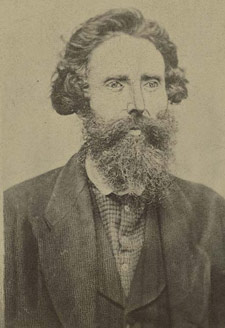 |
| James Montgomery |
Colonel James Montgomery, a devoted abolitionist, worked together with Tubman to plan out a raid to free slaves from plantations along Combahee River in South Carolina
The Raid at Combahee Ferry started in the beginning of June of 1863. On June 1st, Harriet Tubman, who served as the key advisor, along with several hundred soldiers set out on their mission on three gunboats.
The newspaper lauded Tubman’s effort, and she later worked with Colonel Robert Gould Shaw at the assault on
The Confederacy surrendered in April 1865. Tubman, who had worked in the Union forces for years, nursing wounded soldiers, checking the Confederate territory, and helping the newly freed slaves, could now return home.
She never received a regular salary for her years of service. Her constant help to her family and former slaves kept her in poverty a lot of times. Tubman did not receive a pension for her service in the Civil War until 1899.
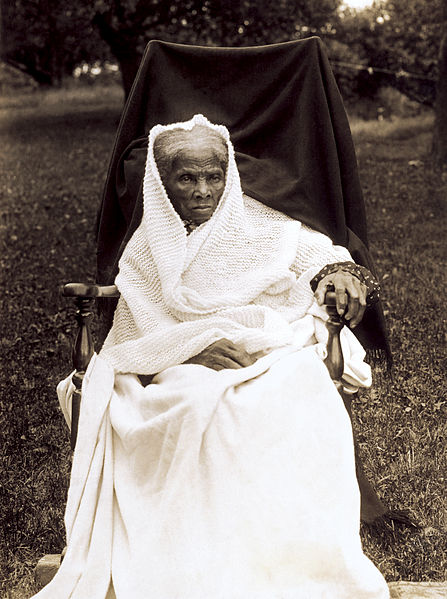 |
| Harriet Tubman in 1911 |
Reflection
1. a) Which main topic does the artifact relate to? In what ways?
It relates to Nationalism and Liberalism: Creation of the Nation-State. It does not have that much to do with the creation of nation-state, but it relates mainly to liberalism. Harriet Tubman, who had been a slave herself, after she managed to escape she returned and saved others. She even took the dangerous position as advisor in the Civil War to save the slaves in South Carolina.
b) Which other main topics does it also relate to?
It also relates to Race Relations" Abolition, Segregation, and Anti-Semitism.
2. Why did you choose this artifact, and how much time did you spend creating and/or processing it?
I chose to do this artifact because i wanted to learn more about Harriet Tubman; i'm glad i did it because she was an incredible person and her story was fascinating to learn about. It took me about one and a half to two hours processing and creating it.
3. What insights and understanding have you gained from the creation and/or processing of this artifact?
I learned about the huge number of slaves that were liberated; Harriet Tubman in war, and also that African Americans still get unequal treatments after the North has won.
4. Does this artifact reflect your best work and/or ideas? Why, or why not?
Yes. I think my description of her is short but precise.
5. Rate this artifact on a scale of -5 to 5(0 is neutral) for the following 4 criterion:
a) Impact on the quality of your Portfolio
4
b) Impact on your level of happiness/enjoyment
5
c) Impact on your learning
5
d) Level of creativity and originality
4
6. Any additional comments.
Sources:
Wikipedia
Artifact 11: Student Free Choice
John Wilkes Booth was born in May 10, 1838, and died at the age of 26 in April 26, 1865.
When he was a boy, he was curious and energetic, but has no interest in school. The teacher in school described that he does not take the opportunity to be educated. At the age of 14, Booth’s father passed away, and Booth left school.
By the age of 16, Booth was interested in the theatre and in politics. WantING to follow the career of his father and brothers, Booth began to practice daily and also studied Shakespeare.
 |
| Playbill advertising Booth in Romeo and Juliet |
Booth’s career was successful; he became a well known actor by the 1860s. He remained in demand as an actor during the Civil War.
 |
| John Brown |
In 1859, he volunteered to serve in Richmond Grays. He joined the militia to guard against any attempt by abolitionists to rescue John Brown from being hanged. He joined, not because he felt obligated, but he joined to witness the hanging of John Brown, a southern abolitionist.
As a popular actor in the 1860s, he continued to travel back and forth to perform in the North and South. Booth became a strong supporter of the South; he is an advocate of slavery, and he hated Abraham Lincoln; he blamed him for all the problems in the South. According to his sister Asia , Booth told to her that he smuggles quinine to the South during his travels there, helping the South obtain the needed drug despite the blockade in the North.
By 1864, the Southerners became losing war after wars. Booth began to plan the abduction of Abraham Lincoln. The purpose was to trade Lincoln
When Lincoln
In the winter of 1864, Booth and other few co-conspirators gathered frequently in to map out different abduction plans. It never worked; Booth then decides that, the only solution is to kill the president.
On the morning of April 14, 1865, John Wilkes Booth overheard that the President Lincoln and her wife would be watching the play Our American Cousin at Ford's Theater.
He knew that was it; now, or never. He was outraged by the South’s defeat. He strongly opposed Lincoln
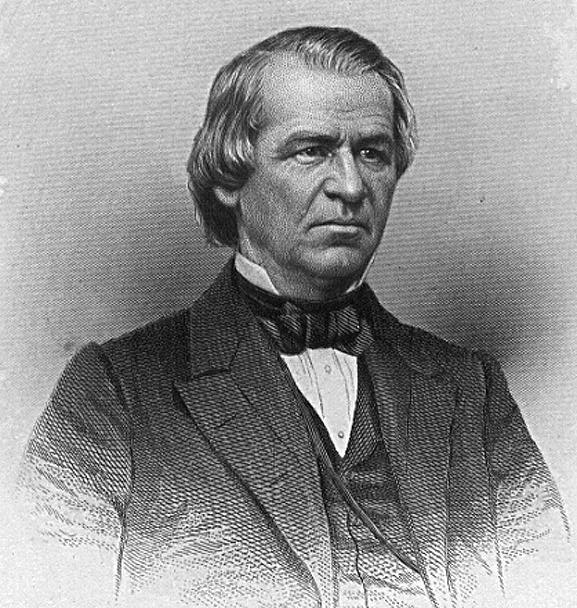 |
| Andrew Johnson |
Booth and a group of co-conspirators planned to kill Lincoln, Vice President Andrew Johnson, and Secretary of State William Seward. Booth was the only conspirator in the group that successfully carried out his part. Seward was badly wounded when he was lying in his bed at home, but he did not die. Andrew Johnson was did not get hurt at all because the co-conspirator was too scared to even try.
As a famous and popular actor, Booth has free access to all parts of the Ford's theater. hEeasily sneaked into Abraham Lincoln's box and shot him in the back of the head with a .44 caliber Derringer. Lincoln
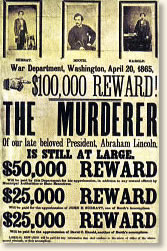 |
| A wanted poster |
After the shooting, Booth escaped on horseback to the south of Maryland Virginia
Through reports, Booth was eventually tracked down by Union soldiers 12 days after the assassination. He was shot at the farm. Four of the conspirators were hanged.
| Booth's escaping routes |
When Booth was wounded in the neck, he was dragged from the barn to the porch of Garrett’s farmhouse. The pain of the wound was excruciating; in his last moments, he whispered “tells my mother I died for my country”. Before he died, he asked to see his hands, and then muttered to them “Useless, useless.”
| Asia Booth |
Booth thought Lincoln
"I know how foolish I shall be deemed for undertaking such a step as this, where, on one side, I have many friends and everything to make me happy ... to give up all ... seems insane; but God is my judge. I love justice more than I do a country that disowns it, more than fame or wealth."
 |
| Brutus |
Choosing the Confederacy's side, he chose to become their Brutus, to overthrow the tyrant that unjustly used his authorities.
He thought he would be viewed as a hero; he thought his name would be put together with folklore's most romantic heroes. He didn’t understand, he was depressed, and felt unappreciated when he read the papers during his hiding period; the whole world was against him; he was not a hero, he was the world’s greatest villain.
Reflection
b) Which other main topics does it also relate to?
It also relates to Race Relations: Abolition, Segregation, and Anti-Semitism.
2. Why did you choose this artifact, and how much time did you spend creating and/or processing it?
I decided to learn more about John Wilkes Booth after watching the video on the assassination of Abraham Lincoln. I felt sorry for him, he only wanted to be a hero, but no one thanked him, and he died tragically. Maybe you might disagree with me, and say he's a villian, but i personally dont think so; that's why i wanted to retell his story, unfortunately i could not tell it as thoroughly as the video. I spent two and a half hour processing and creating it.
3. What insights and understanding have you gained from the creation and/or processing of this artifact?
I learned about why John Wilkes Booth decided to kill Abraham Lincoln; i only briefly talked about the assassination part because i wanted to concentrate on learning about his personal life.
4. Does this artifact reflect your best work and/or ideas? Why, or why not?
5
b) Impact on your level of happiness/enjoyment
5 (6?)
c) Impact on your learning
5
d) Level of creativity and originality
4
6. Any additional comments.
-John Wilkes Booth is awesome.
Citation:
1. a) Which main topic does the artifact relate to? In what ways?
It relates to The Balance of Power: Empire Rise and Fall; the North won the Civil War, therefore the South could no longer rely on slaves. Booth loved his country; he loved the South, and he fought for it. The Civil War happened because of the balance of power; both sides dont want to be ruled by the other.b) Which other main topics does it also relate to?
It also relates to Race Relations: Abolition, Segregation, and Anti-Semitism.
2. Why did you choose this artifact, and how much time did you spend creating and/or processing it?
I decided to learn more about John Wilkes Booth after watching the video on the assassination of Abraham Lincoln. I felt sorry for him, he only wanted to be a hero, but no one thanked him, and he died tragically. Maybe you might disagree with me, and say he's a villian, but i personally dont think so; that's why i wanted to retell his story, unfortunately i could not tell it as thoroughly as the video. I spent two and a half hour processing and creating it.
I learned about why John Wilkes Booth decided to kill Abraham Lincoln; i only briefly talked about the assassination part because i wanted to concentrate on learning about his personal life.
4. Does this artifact reflect your best work and/or ideas? Why, or why not?
Yes. I definitely put a lot of work into it and i enjoy learning about it.
5. Rate this artifact on a scale of -5 to 5(0 is neutral) for the following 4 criterion:
a) Impact on the quality of your Portfolio5
b) Impact on your level of happiness/enjoyment
5 (6?)
c) Impact on your learning
5
d) Level of creativity and originality
4
6. Any additional comments.
-John Wilkes Booth is awesome.
Citation:
The Assassination of Abraham Lincoln Video
Britannica and Wikipedia




